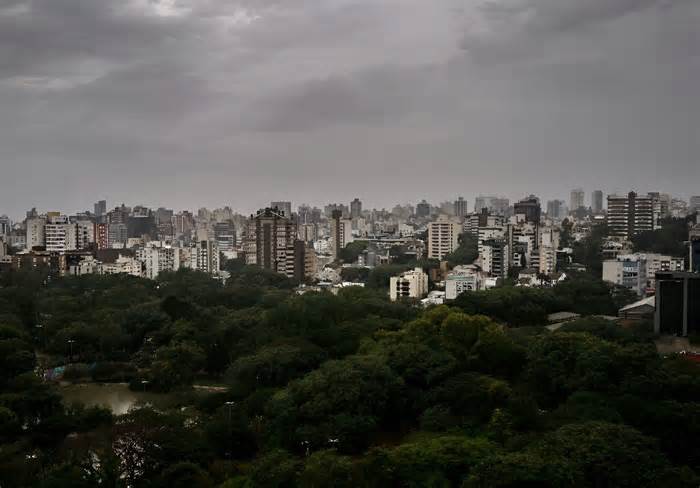Skies opened up in southern Brazil on Friday, providing little respite to those whose homes were engulfed by floodwaters, while the number of others forced to evacuate doubled in 24 hours.
Residents of Rio Grande do Sul state were bracing for a weekend of heavy rains, which would arrive just as the waters that were turning the city’s streets into rivers were beginning to recede.
The deluge, which experts link to the weather phenomenon exacerbated by the El Niño weather phenomenon, has affected some two million people, leaving 126 dead and 756 injured.
According to authorities, another 141 people are still missing.
The state capital, Porto Alegre, home to 1. 4 million people, tried to return to some normalcy on Friday, with some businesses opening and streets blocked as the waters receded.
But then the menacing clouds threw up a new downpour.
The region expects precipitation accompanied by “intense winds and hail,” according to the National Institute of Meteorology.
The MetSul Meteorology reported “a new era of intense atmospheric instability,” with up to 200 millimeters of rain on Monday.
The Guaíba River, which runs through Porto Alegre, reached historic levels this week.
In the past 24 hours, the number of people forced to flee their homes has nearly doubled to about 411,000 people, according to civil defense figures.
More than 71,000 people are housed in shelters.
Since the water supply is still cut off, bottled drinking water is a scarce commodity in Porto Alegre, while tanker trucks deliver it to shelters and hospitals.
In the devastated city of Eldorado do Sul, boats crisscross flooded streets bringing food to those who refuse to leave their homes for fear of looting.
Katiane Mello is waiting for a boat to take her to check on her home, from which she fled a week ago when the Guaíba River overflowed and the waters rose to the floor of the space where she lived with her husband and five-year-old daughter. .
“We have lost our livelihood, our store. And the house. . . ,” she said, her eyes welling with tears at the sight of the damage.
The muddy floods destroyed more than 85,000 homes and dealt a severe blow to the economy of this agricultural region.
In the rice-growing areas surrounding Porto Alegre, farmer Daniel Dalbosco said he had lost his crops “up to two meters of water. “
Their neighbors “have lost between 40 and 50 hectares (100 and 125 acres). It’s very, very complicated,” he said.
The crisis in Rio Grande do Sul is the result of the “double whammy of El Niño and climate change,” Clare Nullis, a spokeswoman for the United Nations meteorological agency (WMO), told a news conference in Geneva.
“Even when El Niño subsides, which it will, the long-term effects of climate change will be present. Every fraction of a degree of temperature that accumulates means our climate will become more extreme.
“Our climate is on steroids. When we are at war with nature. . . nature is coming back and, unfortunately, nature has fought back in Brazil. “
Please choose the appropriate maximum category to facilitate the processing of your request
Thank you for taking the time to provide feedback to editors.
Your opinion is for us. However, we do not guarantee individual replies due to the high volume of messages.

